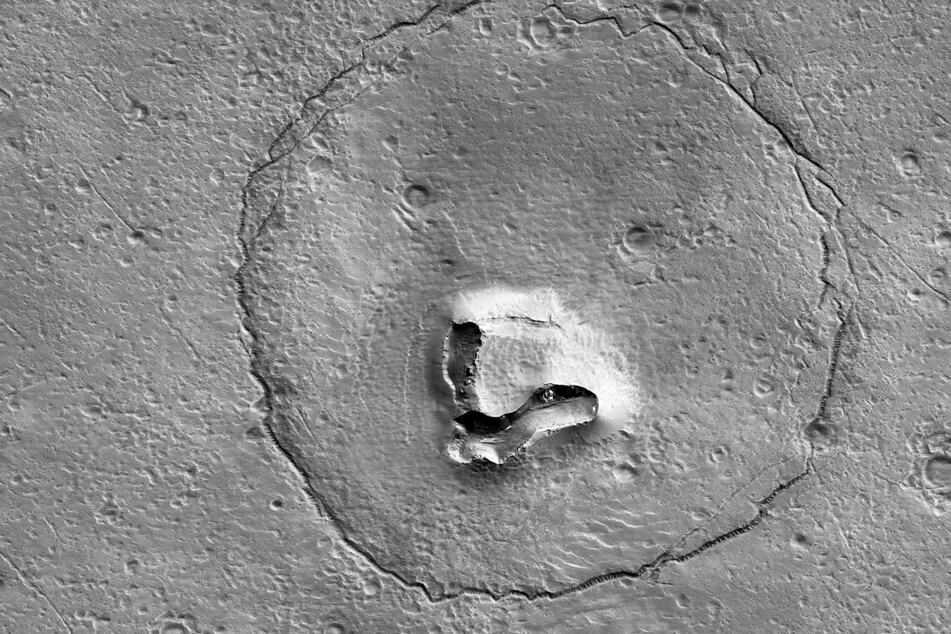NASA spacecraft snaps pic of a bear on Mars!
Tucson, Arizona - Scientists have made an unexpected discovery on Mars: they found a formation that looks like a bear's face in outer space.

On Wednesday, the University of Arizona shared a striking photo from NASA's Mars Reconnaissance Orbiter, which they operate.
The pic of the formation on the planet Mars looks "a bit like a bear's face," they wrote in their tweet.
The pic, which has been posted all over social media, looks like an alien drew a cartoon animal on the surface of the Red Planet.
But before you run wild with the idea that there are animals on Mars, or that aliens are sending us messages in the form of pictographic pandas, just know that there is a far more likely explanation for the phenomenon.
We humans often attribute meaning to random or ambiguous visual patterns, a tendency called pareidolia. For example, we may see shapes in the clouds and faces on the Moon or in wall sockets.
It's probable the bear on Mars is another example of this tendency, with a scientific reasoning far more likely.
University of Arizona explains bear-y interesting discovery
Per the University of Arizona's Lunar and Planetary Laboratory website, the bear's beady eyes are probably made by two craters and a hill with a "V-shaped collapse[d] structure" that forms the beast's snout.
The outline of the animal's face is likely a "circular fracture pattern," which could be "due to the settling of a deposit over a buried impact crater." Experts added that they think the bear's "nose" might be a volcanic or mud vent, from which mud or lava flows.
But the scientists aren't 100% sure about each feature of the formation and suggested we just "grin and bear it."
Cover photo: NASA/JPL-Caltech/UArizona